
Cedar Tree Pollen: How to Manage Allergies and Minimize Exposure
If you’ve ever experienced sneezing fits, itchy eyes, or a runny nose during the winter months, you’re not alone. The culprit? Cedar tree pollen. 
In this article, we’ll dive into everything you need to know about cedar tree pollen—why it’s so troublesome for allergy sufferers, and most importantly, how to manage your symptoms and reduce exposure effectively. From simple home remedies to expert tips on minimizing contact, we’ve got you covered. Keep reading to discover practical solutions for making cedar pollen season much more bearable!
Table of Contents
ToggleWhat is Cedar Tree Pollen? 
Cedar tree pollen is a fine, powdery substance produced by male cedar trees during their pollination season, typically in late winter or early spring. This pollen can travel long distances, often causing allergic reactions in sensitive individuals. The pollen from cedars is particularly potent because it’s lightweight and can stay suspended in the air for extended periods.
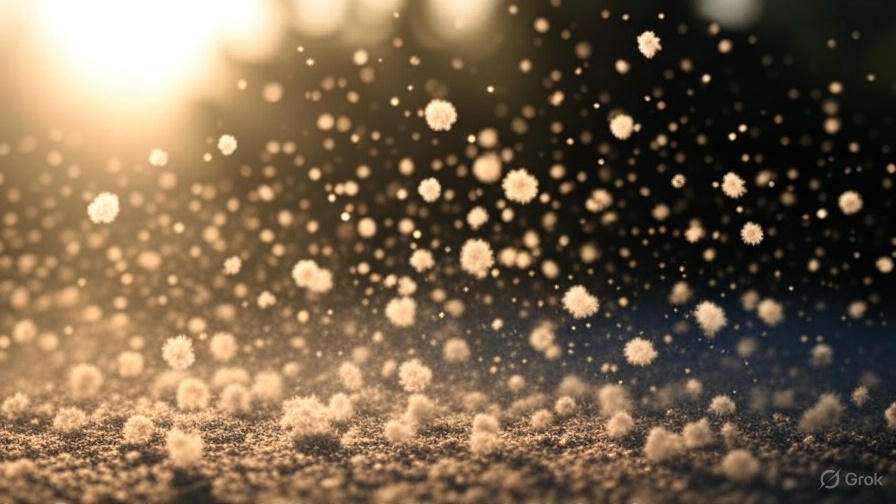
Why is Cedar Pollen a Problem for Some? 
For people with allergies, cedar pollen can trigger symptoms like sneezing, itchy eyes, congestion, and a runny nose. In some cases, it can even lead to asthma flare-ups. The main reason cedar pollen is so troublesome is that it contains proteins that many people’s immune systems mistakenly identify as harmful. As a result, their bodies release histamines to fight it off, causing those dreaded allergy symptoms.
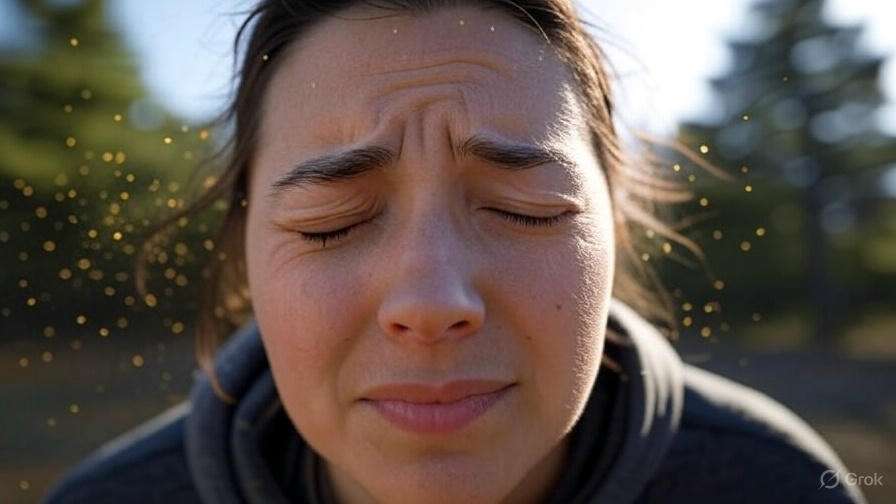
When Does Cedar Pollen Season Occur? 
Cedar pollen season can vary depending on where you live, but it typically starts in late winter (December through February) and may last into early spring. In areas where cedar trees are abundant, like parts of Texas and California, the season can be especially challenging.
Key Facts to Keep in Mind:
- Size of the Pollen: Cedar pollen is very small, allowing it to travel long distances. This means you may experience symptoms even if you’re not close to a cedar tree.
- Allergy Triggers: It’s not just the pollen that can cause issues. The dry, windy conditions during cedar pollination season can stir up pollen and increase exposure.
- Geographic Impact: Cedar trees are widespread in certain regions, and cedar pollen can be a significant problem in these areas.
By understanding what cedar pollen is and why it causes allergies, you’ll be better prepared to manage your symptoms and minimize exposure during peak seasons!
Why Cedar Tree Pollen Causes Allergies 
Cedar tree pollen is a major culprit behind seasonal allergies, especially in areas where cedar trees are common, like parts of the United States. But what exactly makes this pollen so problematic for allergy sufferers? Let’s break it down simply.
1. What Is Cedar Tree Pollen? 
Cedar tree pollen is produced by the male cedar trees during their flowering season, which typically occurs in late winter to early spring. This fine, lightweight pollen is carried by the wind, making it easy to travel long distances and spread widely. It can be inhaled into your nose or eyes, triggering allergy symptoms.
2. Why Does Cedar Pollen Cause Allergies? 
Cedar pollen contains proteins that can trigger an immune response in sensitive individuals. When you breathe in cedar pollen, your immune system mistakenly identifies it as a harmful substance. In response, it releases chemicals like histamines to protect you, which leads to the familiar allergy symptoms such as sneezing, itchy eyes, congestion, and a runny nose.
3. How Cedar Pollen Affects Your Body 
- Respiratory symptoms: Since cedar pollen is tiny and light, it easily reaches the lungs, causing wheezing, coughing, and shortness of breath in some people.
- Eye irritation: Cedar pollen can also affect your eyes, causing them to itch, water, or become red.
- Sinus congestion: The body reacts to pollen by inflaming the sinuses, leading to pressure, headaches, and difficulty breathing through the nose.
4. Who Is Most at Risk? 
While anyone can be affected by cedar pollen, those with pre-existing respiratory conditions like asthma or individuals with a family history of allergies are at a higher risk. Children, the elderly, and people living in heavily wooded areas also tend to experience stronger symptoms.
5. The Timing and Duration of Cedar Allergy Season 
Cedar pollen season usually peaks in the winter months, making it especially troublesome for people who suffer from allergies during the off-peak allergy seasons (like winter). However, the timing and intensity of the season can vary depending on weather conditions, tree density, and geography.
6. Managing Cedar Pollen Allergies 
- Limit outdoor activities: On days when pollen counts are high, try to stay indoors, especially in the early morning and late afternoon when pollen levels peak.
- Keep windows closed: Prevent pollen from entering your home by keeping windows closed during cedar pollen season.
- Use air purifiers: A high-quality HEPA filter can trap pollen inside your home, reducing your exposure.
- Wash off pollen: After being outside, take a shower and change clothes to remove pollen from your body and hair.
7. How to Reduce Exposure to Cedar Pollen 
- Track pollen counts: Stay informed by checking local pollen forecasts. Many weather apps provide pollen alerts, helping you plan your day better.
- Use allergy medications: Over-the-counter antihistamines or nasal sprays can help reduce symptoms. Consult with your healthcare provider for advice on the best treatment.
- Protect your eyes: Wear sunglasses or goggles when going outdoors to prevent pollen from irritating your eyes.
By understanding why cedar tree pollen triggers allergies and how to manage your exposure, you can minimize discomfort and enjoy the outdoors, even during peak pollen season.
Common Symptoms of Cedar Tree Pollen Allergies 
Cedar tree pollen allergies can be a major annoyance, especially during pollen season. If you find yourself sneezing, itching, or feeling congested, it could be due to cedar tree pollen. Recognizing the symptoms early can help you take the right steps to manage your allergy and minimize discomfort. Here are the most common symptoms to watch for:
1. Sneezing and Runny Nose 
One of the most common signs of cedar pollen allergies is frequent sneezing and a runny nose. These symptoms occur when your immune system reacts to the pollen particles in the air, triggering an allergic response.

2. Nasal Congestion 
Blocked nasal passages or stuffiness are typical signs. You might struggle to breathe through your nose, especially in the mornings or after being outdoors.
3. Itchy Eyes 
Itchy, red, or watery eyes are classic symptoms of any pollen allergy, including cedar. You may find yourself rubbing your eyes more often, which can lead to further irritation.
4. Throat Irritation and Coughing 
Cedar tree pollen can also irritate your throat, causing a scratchy sensation or persistent coughing. This can be particularly noticeable in dry or windy conditions.
5. Fatigue and Difficulty Sleeping 
When your body is fighting off an allergic reaction, it can lead to feelings of fatigue and trouble sleeping. This is especially common if nasal congestion or throat irritation prevents you from getting rest.
6. Headaches 
Many people with cedar pollen allergies also experience headaches. This is often due to sinus pressure and congestion, which can cause a dull, throbbing pain.
Why These Symptoms Matter
Cedar pollen allergies can worsen if not managed properly. Ignoring symptoms can lead to sinus infections or worsen other respiratory conditions like asthma. If you experience any of these signs regularly during pollen season, it’s important to start managing your symptoms early.
By being aware of these symptoms and understanding how to address them, you can take proactive steps to feel better and reduce your exposure to cedar pollen. Let’s dive into effective strategies for minimizing symptoms in the next section!
This section is designed to be clear, practical, and action-oriented, while ensuring that your audience easily grasps the common symptoms of cedar tree pollen allergies.
How to Manage Cedar Tree Pollen Allergies 
Cedar tree pollen can be a major trigger for seasonal allergies, causing symptoms like sneezing, itchy eyes, and a runny nose. But don’t worry—there are several ways to minimize your exposure and manage these allergies effectively. Here’s how you can stay comfortable even during cedar pollen season:
1. Know When Cedar Pollen is in the Air 
Cedar trees release their pollen mainly during late winter and early spring, especially in regions with abundant cedar forests. By checking local pollen forecasts, you can stay ahead of high pollen days and plan your activities accordingly. Apps and websites often provide pollen levels for your area, helping you stay prepared.
2. Limit Outdoor Exposure 
On days when pollen counts are high, try to stay indoors as much as possible. If you do need to go outside, aim to do so in the late afternoon or after rain, as pollen levels tend to be lower at these times. When you return indoors, change your clothes and take a shower to wash off any pollen that may have stuck to your skin or hair.
3. Use Air Purifiers and Keep Windows Closed 
Air purifiers with HEPA filters can help remove pollen from the air inside your home. Keeping your windows closed during high pollen periods will also reduce the amount of pollen that enters your space. It’s also a good idea to keep your car windows closed while driving.
4. Wear Protective Gear 
If you can’t avoid being outside, consider wearing sunglasses to shield your eyes from pollen and a mask to reduce the amount of pollen you breathe in. This is especially helpful during windy days when pollen is more likely to be carried through the air.
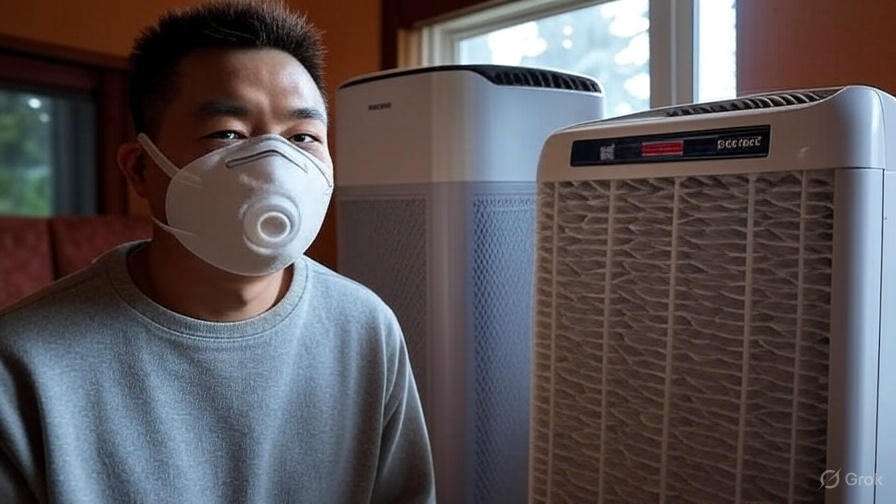
5. Over-the-Counter Medications 
Antihistamines, nasal sprays, and decongestants can provide relief from common allergy symptoms. Be sure to choose medications specifically formulated for pollen allergies, and consult with a healthcare provider if you’re unsure which one is best for you. Starting medication a few days before peak pollen season can help reduce the severity of your symptoms.
6. Maintain Cleanliness in Your Home 
Frequent cleaning can help minimize pollen exposure. Vacuum your floors, rugs, and furniture regularly using a vacuum with a HEPA filter. Wash your bedding and curtains frequently to ensure that no pollen accumulates. Using a damp cloth to wipe down surfaces will prevent pollen from becoming airborne.
7. Consider Allergy Shots (Immunotherapy) 
If your cedar tree pollen allergies are severe and persist despite medication, you may want to consider allergy shots (immunotherapy). This treatment gradually desensitizes your immune system to allergens, providing long-term relief. Speak with your doctor to see if this could be a good option for you.
8. Boost Your Immune System 
A strong immune system can help your body fight off allergens more effectively. Incorporate vitamin-rich foods, especially vitamin C, into your diet to support immune function. Drinking plenty of water and staying hydrated is also key to helping your body stay in balance during allergy season.
Final Thoughts 
Managing cedar tree pollen allergies doesn’t have to be a daunting task. With a little preparation and the right strategies, you can minimize your exposure and reduce symptoms. Stay informed about pollen levels, take proactive steps to protect yourself, and consult a healthcare provider if needed. By staying on top of your allergy management, you can enjoy the beauty of nature without the discomfort.
Stay allergy-free and breathe easy!
How to Minimize Exposure to Cedar Tree Pollen 
Cedar tree pollen can be a major trigger for allergies, especially during peak pollen seasons. If you’re looking to minimize your exposure and alleviate symptoms, here are some practical steps to help you stay comfortable and breathe easier:
1. Keep Windows Closed 
When cedar pollen levels are high, avoid opening your windows, especially during the early morning and late afternoon, when pollen counts are at their peak. Keeping windows closed will prevent pollen from drifting indoors.
2. Use Air Purifiers 
Invest in a good-quality air purifier with a HEPA filter. These filters trap tiny pollen particles and can greatly improve indoor air quality, making your home a pollen-free sanctuary. Be sure to place it in common areas like the living room or bedroom.
3. Shower After Being Outside 
After spending time outdoors, pollen can stick to your skin, hair, and clothes. Showering immediately and washing your clothes will help remove pollen and reduce your exposure indoors.
4. Avoid Outdoor Activities on High Pollen Days 
Check pollen forecasts regularly, especially during the peak cedar tree pollen seasons (usually winter to early spring). If the count is high, try to limit outdoor activities like walking, running, or gardening. Consider staying indoors during the early morning when pollen levels are highest.
5. Wear a Mask 
If you absolutely must go outside, wearing a pollen mask can help protect you from inhaling pollen. This is especially helpful if you’re doing yard work or other outdoor activities.
6. Keep Your Car Clean 
Your car can be a pollen trap! Keep the windows up and use your vehicle’s air conditioning system to filter out pollen. You can also vacuum your car’s interior regularly to remove any pollen that has found its way inside.
7. Dry Laundry Indoors 
Avoid hanging laundry outside on windy days when pollen counts are high. Pollen can cling to your clothes, bedding, and towels, which can worsen your symptoms. Instead, dry your laundry indoors to avoid this issue.
8. Use Saline Nasal Spray 
A saline nasal spray can help wash out pollen from your nasal passages. Using it regularly, especially after being outside, can help keep your airways clear and reduce irritation.
9. Trim or Remove Cedar Trees Near Your Home 
If you have cedar trees near your house and they’re causing consistent allergy issues, consider trimming them back or even removing them. Consult a professional before making any drastic changes, but reducing the proximity of these trees can decrease your pollen exposure.
By following these simple yet effective steps, you can minimize your exposure to cedar tree pollen and enjoy the season without constant allergy discomfort. Stay informed, stay prepared, and your allergy season will be much more manageable!
This section is designed to be practical, actionable, and beginner-friendly, ensuring readers can easily follow these steps to reduce cedar tree pollen exposure.
What to Do If You’re Severely Affected by Cedar Tree Pollen
If you find yourself severely affected by cedar tree pollen, it’s important to take immediate steps to minimize exposure and relieve your symptoms. Here’s a clear, step-by-step guide to help you manage your allergies:
1. Stay Indoors During Peak Pollen Hours 
Cedar pollen is most active in the early morning and late afternoon. Try to stay indoors, especially on dry, windy days when pollen is more likely to spread. If possible, check local pollen forecasts to plan your outdoor activities better.
2. Keep Windows Closed 
To prevent pollen from entering your home, keep windows and doors shut, particularly during high pollen seasons. Use air conditioning instead of opening windows for ventilation. If you don’t have AC, consider using a fan with a HEPA filter to circulate air without letting pollen in.
3. Use HEPA Air Purifiers 
Investing in a HEPA air purifier for your home can drastically reduce the amount of pollen in the air. Place them in rooms where you spend the most time, like your bedroom and living room. This helps create a cleaner environment and reduces allergy symptoms.
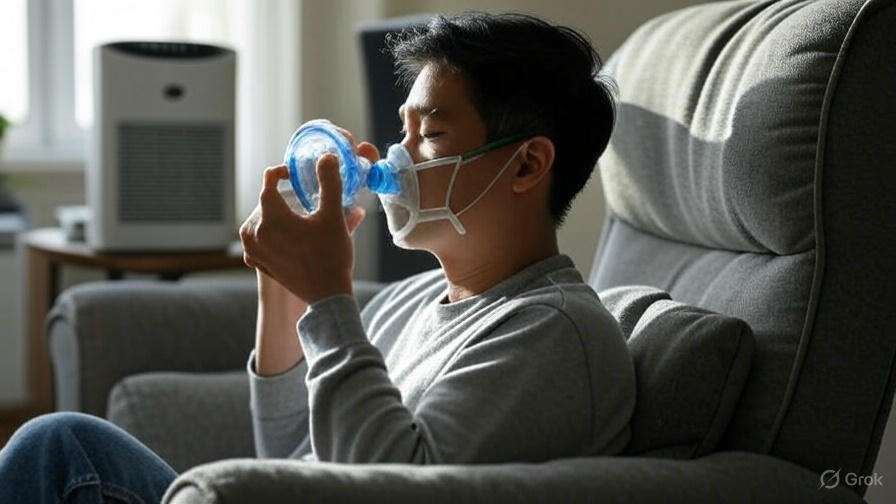
4. Shower and Change Clothes After Being Outdoors 
Cedar pollen can cling to your skin, hair, and clothes. After spending time outside, immediately shower and change into fresh clothes to remove any pollen that may have settled on you. This simple step can reduce your exposure indoors.
5. Take Allergy Medications 
Over-the-counter antihistamines, nasal sprays, or decongestants can help alleviate symptoms like sneezing, congestion, and itchy eyes. For severe cases, consult a doctor for stronger medications or allergy shots. Always follow the recommended dosage and consult your healthcare provider before starting any new treatment.
6. Use Saline Nasal Rinse or Sprays 
A saline nasal rinse can help clear out pollen from your nasal passages, reducing irritation and congestion. You can use a saline spray or a Neti pot for a more thorough cleanse. Just make sure you use distilled or boiled water to avoid infections.
7. Wear Sunglasses or a Hat Outdoors 
Wearing sunglasses or a wide-brimmed hat can help protect your eyes from pollen when you must be outdoors. This small step can reduce the amount of pollen that comes into contact with your eyes, helping prevent irritation and redness.
8. Limit Outdoor Activities 
During peak pollen seasons, try to limit outdoor activities, especially if you’re particularly sensitive to pollen. If you need to exercise or be outside, try to do so after a rainstorm when the pollen count is lower.
9. Consult an Allergist 
If cedar pollen allergies are severely impacting your daily life, it’s a good idea to see an allergist. They can help identify your specific triggers, offer allergy testing, and provide a personalized treatment plan. This may include prescription medications or even immunotherapy (allergy shots).
By following these simple steps, you can greatly reduce your exposure to cedar tree pollen and relieve allergy symptoms. The key is staying proactive and taking the right measures to protect yourself. Stay safe, and breathe easier!
Cedar Tree Pollen vs. Other Pollen Types 
When it comes to pollen allergies, not all pollen is created equal. Understanding the differences between cedar tree pollen and other types of pollen can help you better manage your symptoms and reduce exposure. Let’s break it down:
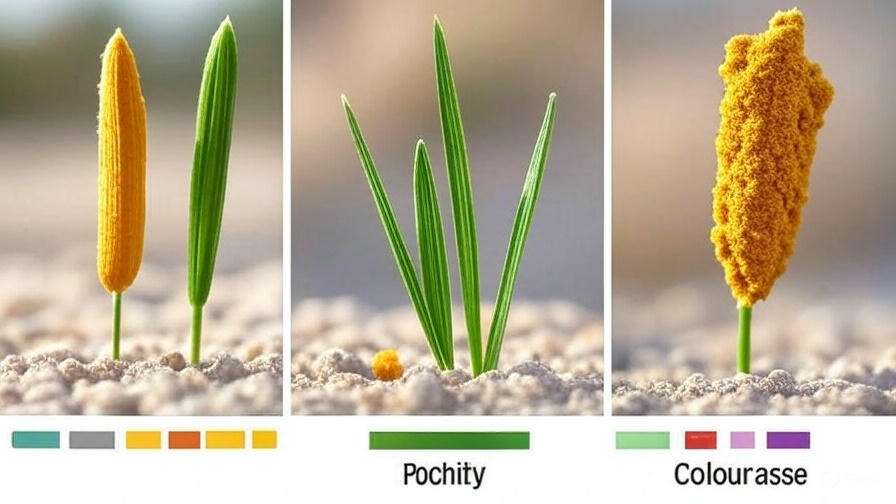
1. Cedar Tree Pollen: A Sneaky Allergen
Cedar trees, particularly the Eastern Red Cedar, release their pollen during the winter months, unlike many trees that release pollen in the spring. This means cedar pollen can catch people off guard, as they often aren’t expecting seasonal allergies during colder months. Cedar pollen is highly potent and can travel long distances in the air, making it more likely to affect people far from the trees themselves.
Symptoms from Cedar Pollen
- Sneezing
- Runny or stuffy nose
- Watery or itchy eyes
- Throat irritation or coughing
- Headaches
2. How Cedar Pollen Differs from Other Pollen Types
While all pollen types can trigger allergic reactions, they vary in how they affect the body and when they are most problematic:
- Tree Pollen (e.g., Oak, Birch)
These pollens are typically released in the spring, and they can be less potent than cedar pollen. However, their allergy season is usually longer, stretching from late winter to early summer. People with tree pollen allergies may experience milder symptoms than those reacting to cedar pollen. - Grass Pollen (e.g., Ryegrass, Timothy)
Grass pollen tends to peak in late spring to early summer. Grass pollen is smaller and more lightweight than tree pollen, allowing it to travel further and causing allergies in a larger area. Grass pollen can also trigger more intense symptoms, especially in people who are sensitive to both grass and tree pollens. - Weed Pollen (e.g., Ragweed)
Weed pollen is most common in late summer to fall. It’s another highly allergenic type of pollen, often causing intense symptoms in people with seasonal allergies. However, ragweed pollen, for example, tends to be a little more specific in the areas it affects compared to cedar pollen, which can affect wider regions.
3. Why Cedar Pollen is Extra Troublesome
Cedar pollen is notorious for its ability to trigger severe seasonal allergic reactions, particularly in certain regions like the western United States. Unlike grass and weed pollen, which are usually more seasonal, cedar pollen can remain airborne for long periods, making it harder to avoid. It also tends to peak in short bursts, which can cause a sudden spike in symptoms, leaving allergy sufferers scrambling for relief.
4. Managing Cedar Pollen vs. Other Pollen Types
While managing any pollen allergy involves some basic steps, there are specific tips for handling cedar pollen:
- Limit Outdoor Activities
: Avoid going outdoors during peak cedar pollen times, usually in the morning.
- Keep Windows Closed: Especially during the pollen season, keep your windows closed to prevent pollen from entering your home.
- Shower After Being Outdoors
: Rinse off pollen that might be stuck to your skin or hair.
- Use Air Purifiers: Invest in a HEPA air purifier to reduce pollen exposure indoors.
- Over-the-Counter Medications: Antihistamines, nasal sprays, and decongestants can help alleviate symptoms, but make sure to choose ones that specifically target pollen allergies.
Conclusion
Understanding how cedar pollen differs from other types, like tree, grass, and weed pollen, gives you an edge in managing your seasonal allergies. While all types of pollen can cause issues, cedar pollen is often more intense and unexpected, requiring proactive steps to minimize exposure. By knowing what to expect and how to handle it, you can enjoy a more comfortable allergy season—whether it’s cedar or any other pollen that comes your way!
By providing clear comparisons and actionable steps, this section gives readers a better understanding of how to tackle cedar pollen allergies and minimize exposure—helping them breathe a little easier!
Tips for Living in Cedar-Pollen-Rich Areas 

Living in areas where cedar pollen is abundant can be challenging, especially if you’re sensitive to allergies. But don’t worry! There are several practical steps you can take to manage cedar pollen exposure and keep your symptoms under control. Here are some simple yet effective tips to help you breathe easier and enjoy life to the fullest, even during cedar pollen season.
1. Check Pollen Counts Daily 
Start your day by checking the local pollen forecast. Many weather apps or websites provide daily pollen counts, helping you plan your outdoor activities. On high-pollen days, try to stay indoors as much as possible or limit outdoor exposure to early mornings or late evenings when pollen levels tend to be lower.
2. Keep Windows Closed 

It’s tempting to let fresh air in, but keeping windows closed during cedar pollen season is one of the most effective ways to reduce pollen exposure indoors. Use air conditioning to cool your home instead, and ensure your filters are clean to trap any airborne pollen.
3. Use High-Efficiency Air Filters 
Invest in a high-efficiency particulate air (HEPA) filter for your home. HEPA filters can remove up to 99.97% of pollen particles from the air. Consider placing one in your bedroom for a better night’s sleep, as pollen levels tend to be higher in the morning and evening.
4. Shower and Change Clothes After Being Outdoors 

Cedar pollen sticks to your skin, hair, and clothing. After spending time outside, make sure to shower and change into clean clothes to avoid bringing pollen into your home. This will help minimize allergic reactions and reduce pollen buildup in your living spaces.
5. Allergy-Proof Your Bedding 
Cedar pollen can linger in your sheets and pillowcases. To protect yourself while you sleep, wash your bedding regularly in hot water. Consider using allergen-proof covers on your pillows and mattresses to prevent pollen from settling on your bed.
6. Use a Nasal Spray or Antihistamine 
If you’re already experiencing allergy symptoms, over-the-counter nasal sprays or antihistamines can help relieve them. Consult with a healthcare provider to find the best solution for your symptoms. Regular use of these products can help you manage the effects of cedar pollen more effectively.
7. Limit Outdoor Activities During Peak Pollen Times 
Cedar trees release pollen at specific times of the day, usually early morning and late afternoon. To minimize exposure, try to schedule outdoor activities in the late morning or after sunset, when pollen counts are lower.
8. Create a Pollen-Free Zone Indoors 
Designate a specific room in your home as a “pollen-free zone.” Keep this room well-ventilated and free from outdoor air. If possible, try to spend more time in this room, especially during the peak pollen season.
9. Consider Allergy Shots (Immunotherapy) 
If you find that over-the-counter medications aren’t enough, allergy shots (immunotherapy) might be a longer-term solution. These shots gradually desensitize your immune system to cedar pollen, offering relief over time. Speak to your doctor about whether this is the right option for you.
10. Stay Hydrated and Support Your Immune System 

Drinking plenty of water and maintaining a healthy diet can help your body fight off allergies more effectively. Foods rich in vitamin C, like oranges and bell peppers, can strengthen your immune system, making it easier to cope with allergens like cedar pollen.
By following these simple yet effective tips, you can reduce your cedar pollen exposure and manage your allergies more efficiently. Stay proactive, and don’t let pollen take away your comfort during the cedar pollen season.
Conclusion 
Cedar tree pollen can be a major nuisance for allergy sufferers, especially during peak pollen seasons. However, with the right knowledge and strategies, you can effectively manage your symptoms and minimize exposure. From taking the right medications and natural remedies to making simple lifestyle changes like keeping your home pollen-free, these practical steps can make a significant difference.

Remember, cedar pollen allergies don’t have to control your life. With a proactive approach, you can reduce the impact of allergies and enjoy a healthier, more comfortable allergy season. If your symptoms persist or worsen, don’t hesitate to consult with an allergist for personalized treatment options.
Take control of your cedar pollen allergies today, and breathe easier tomorrow!
Frequently Asked Questions(FAQ)
When is cedar pollen season, and how long does it last?
Cedar pollen season typically peaks from December to March, depending on the region. The season can last anywhere from a few weeks to a couple of months, with the highest pollen levels usually occurring in the early morning hours. Being aware of this timing can help you better prepare and reduce exposure.
What are the common symptoms of cedar pollen allergies?
Cedar pollen allergies often cause sneezing, runny nose, itchy or watery eyes, coughing, and fatigue. Some people may also experience congestion or headaches. Recognizing these symptoms can help you determine if cedar pollen is triggering your allergies
How can I reduce my exposure to cedar pollen?
To reduce exposure, stay indoors during peak pollen times (usually early mornings), keep windows closed, and use HEPA air purifiers at home. After spending time outdoors, wash your clothes and shower to remove pollen from your skin and hair. Avoiding outdoor activities during high pollen days is also key.
Are there any medications that can help with cedar pollen allergies?
Yes! Antihistamines and decongestants can provide quick relief for cedar pollen allergy symptoms. Steroid nasal sprays or eye drops can also help. If symptoms are severe, consult a doctor for prescription medications or allergy shots (immunotherapy) for long-term relief
Can natural remedies help with cedar pollen allergies?
Some natural remedies, such as local honey, may help alleviate mild symptoms by building up immunity to local allergens. Nasal irrigation (Neti pot) with saline solution can clear out pollen from your sinuses. However, these remedies work best in conjunction with other treatments and should be used cautiously.
Can cedar pollen cause asthma or worsen existing asthma symptoms?
Yes, cedar pollen can trigger asthma attacks in sensitive individuals or worsen existing asthma symptoms like wheezing and shortness of breath. It’s important to have an asthma action plan and follow prescribed treatments if you’re allergic to cedar pollen.
Are there any foods I should avoid if I’m allergic to cedar pollen?
People with cedar pollen allergies may experience oral allergy syndrome (OAS) with certain foods like apples, peaches, and cherries, which contain proteins similar to those found in cedar pollen. If you notice itching or swelling after eating these foods, it’s best to avoid them during peak pollen season.
Should I seek professional help for cedar pollen allergies?
If your symptoms are severe or don’t improve with over-the-counter medications, it’s a good idea to consult an allergist. They can perform tests to confirm if cedar pollen is the cause of your symptoms and recommend allergy treatments like immunotherapy (allergy shots) for long-term relief.

